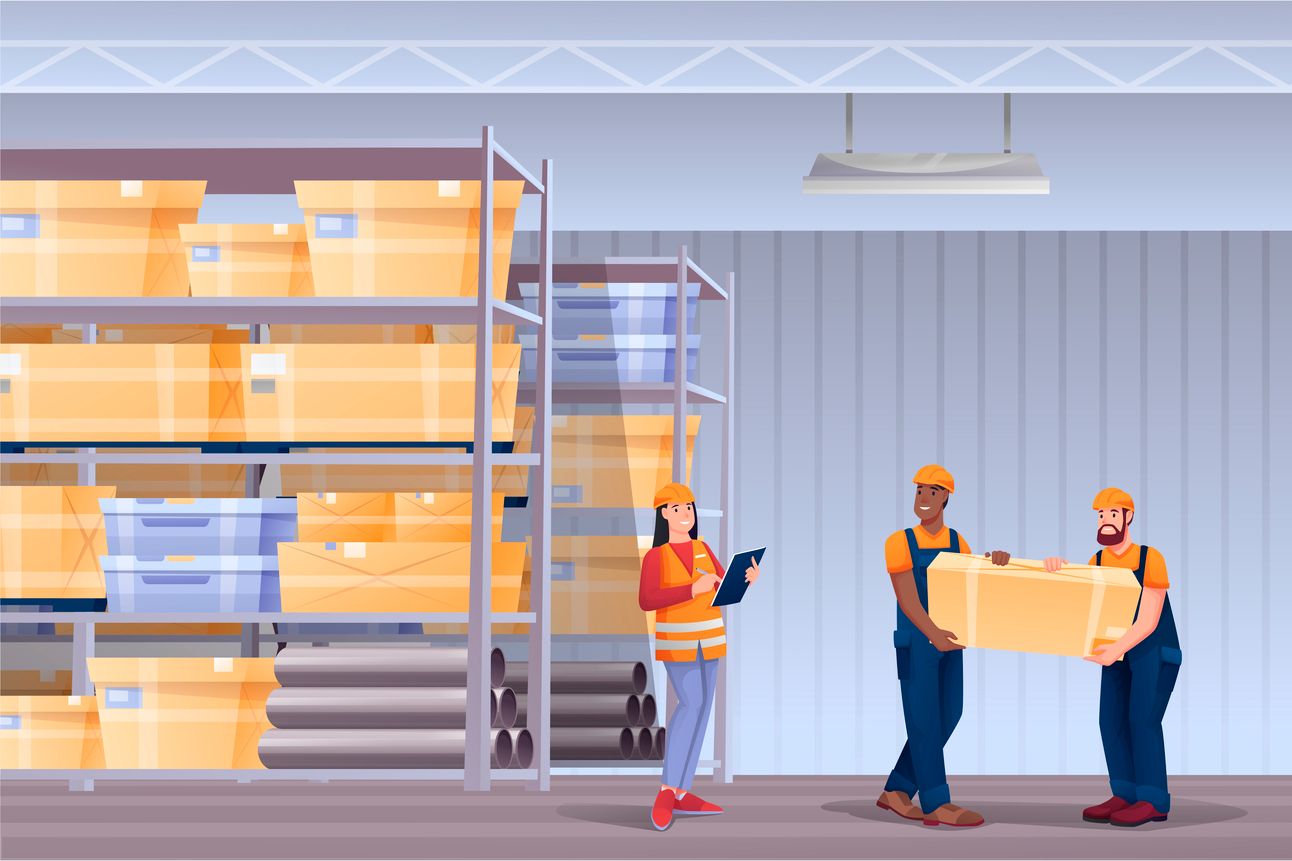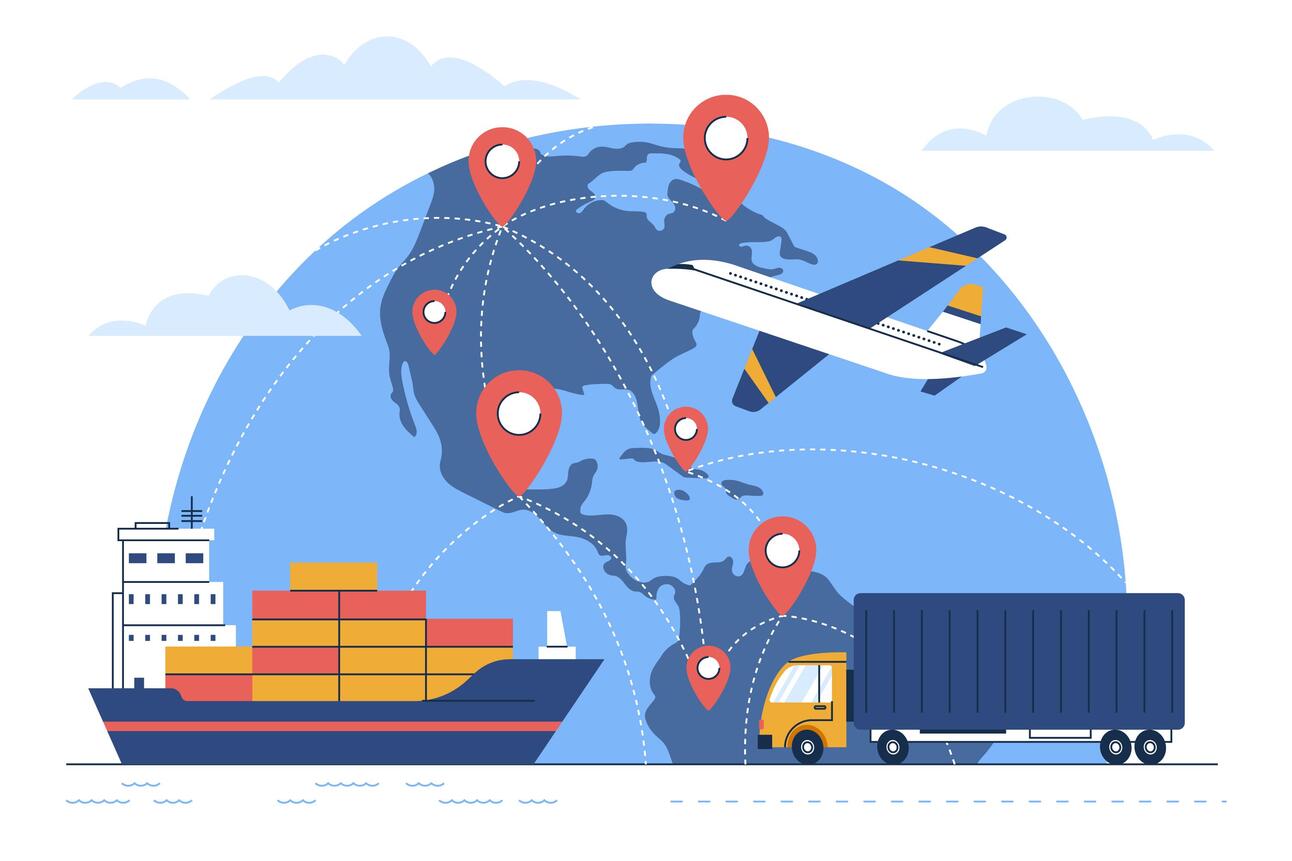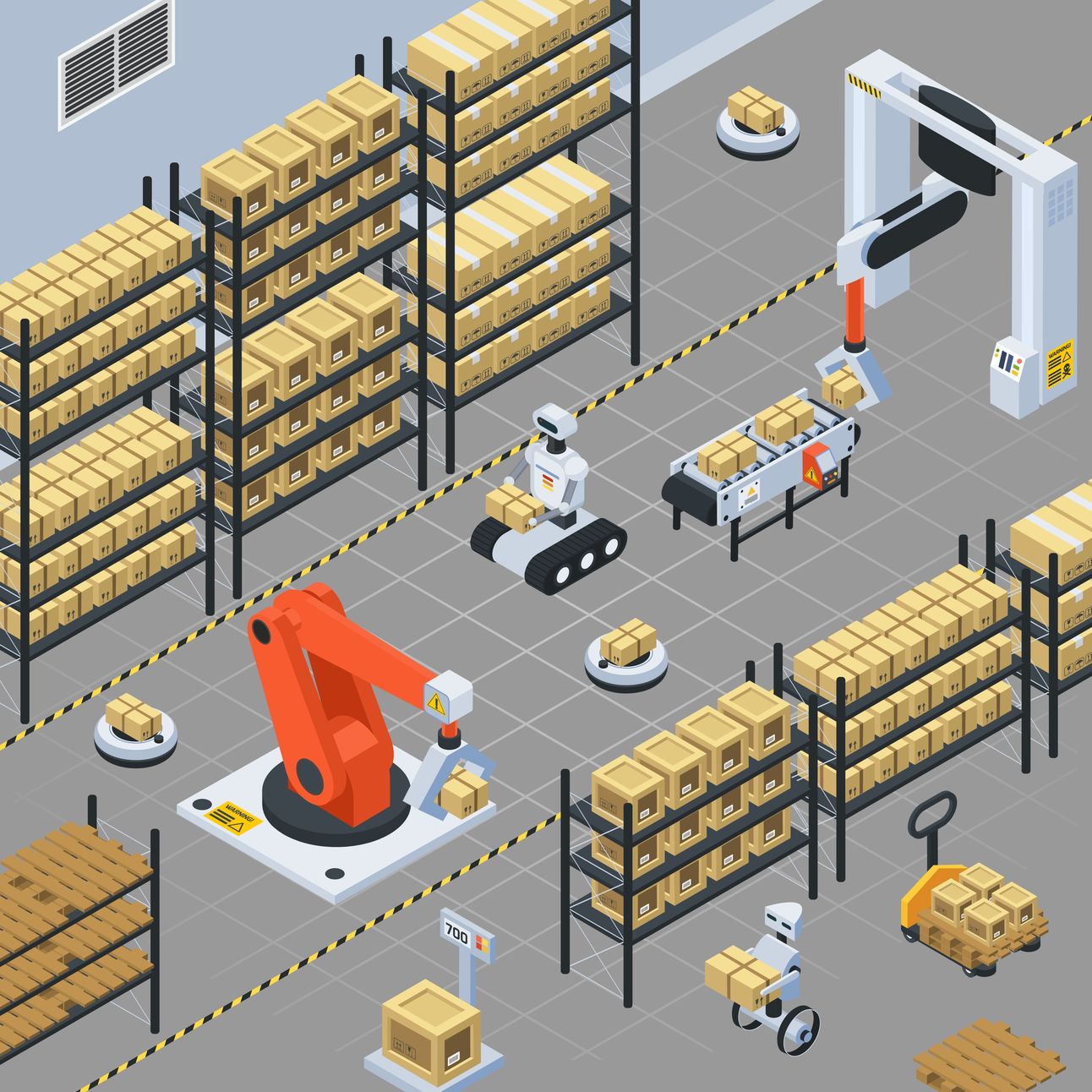- Warehouse Wisdom. Weekly.
- Posts
- Warehouse Wisdom. Weekly. 08/09/2024
Warehouse Wisdom. Weekly. 08/09/2024
Only the most relevant news for SMBs to improve logistics – picked, packed, and delivered without the bias.

Happy Friday!
Looks like the rollercoaster ride isn't just at the theme park this summer because the markets have been on a wild one themselves. The week has been filled with wild swings and losses in the stock market and tons of economic uncertainty. Even Amazon is seeing signs of slowed growth, dropping more than 12% of online sales. Apparently, their online sales growth slowed in the second quarter, and it seems like people are looking for cheaper options elsewhere.
So, while you are looking for cheaper options for your goods, let us catch you up on this week’s newsletter. This week, we will update you on the customer activity outlook in warehousing, challenges freight and logistics are currently facing, the cause of disruptions in supply chains, new trends in marketplaces, and more!
LOGISTICS VITALS
CUSTOMER ACTIVITY IN WAREHOUSING OUTLOOK IS MIXED

The new Industrial Business Indicator (IBI) by Prologis gives a mixed outlook on customer activity in warehousing. The July reading of 60.6 is positive, but the company defines 56-62 as normal - so it's not too exciting. Let’s look at the key points included in the July IBI:
28% - decrease in speculative starts in July
84.9% - IBI Utilization Rate, which is below the long-term average of 85.5%-85.6%
12% - decrease in the pipeline of unleased space under construction
42% - projected drop in completions in the second half of the year
According to Melinda McLaughlin, SVP of Research for Prologis, the growth patterns for consumption and restocking seem flexible enough to keep U.S. warehousing activity going. Despite the IBI Utilization Rate being below the average for expansion and new logistics space not meeting the usual standards, there's been an increase in leasing and leading activities..
LOGISTICS JOBS
FREIGHT AND LOGISTICS INDUSTRY FACES NEW WAVE OF LAYOFFS AND JOB DECLINES

Oh no, more layoffs in the freight and logistics industry. This is the third wave of layoffs since July. Companies in California, Georgia, Illinois, New York, and Texas are letting people go and closing facilities. Geodis, Bimbo Bakeries, Quality Custom Distribution, Neovia Logistics, and Dave's California Logistics are all in on it, letting go of 1,234 workers. With the industry facing such widespread challenges, the ripple effects could be felt across the entire supply chain.
Truck transportation jobs took another hit in July, marking the fourth month in a row of declines. The industry is now down by 30,000 jobs compared to last year. David Spencer from Arrive Logistic noted that carriers and drivers might be giving up after a lackluster peak season. He mentioned that while there are signs of improvement, no one knows when the spot market will pick up again. Looks like the road to recovery might have a few more potholes than we thought.
INTERNATIONAL SUPPLY CHAINS
SUPPLY CHAINS DISRUPTED BY HURRICANE DEBBY, HOUTHI ATTACKS, AND CANADIAN FREIGHT STRIKE CAUSES REROUTING

More disruptions in the global supply chain this week…
Hurricane Debby is causing disruptions in supply chains across aerospace, life sciences, manufacturing, and oil and gas industries. About 17,000 sites involved in making and distributing stuff are in the danger zone, impacting the production of 17,500 products. Emergency declarations and transportation orders are in place in Florida, Georgia, and South Carolina to handle Debby's wrath, while some ports in Florida remain shut tight due to the storm.
After a two-week pause, Yemen's Houthi rebels have resumed attacks in the Red Sea, targeting a Liberian-flagged containership in the Gulf of Aden on August 4. The Houthis claim these attacks are part of their campaign against ships linked to Israel, the U.S., or Britain, although many targeted vessels, like the Groton, have minimal connection to the Israel-Hamas war. The recent assault underscores the ongoing risks in this crucial shipping corridor.
Looks like Canadian railway customers are jumping ship to U.S. solutions in fear of strikes. Importers are in a rush to get their products into the U.S. with possible strikes looming on the East Coast and Gulf Coast ports on Oct. 1. But hold on; there might be trouble brewing up north, too. Canadian National (CN) Railway and Canadian Pacific Kansas City (CPKC) are seeing customers diverting freight away in anticipation of a strike. So, goods intended for British Columbia gateways are now taking a detour to U.S. ports instead.
And at least a little reprieve - second-week prices are down for container shipping. The Drewry's World Container Index (WCI) dropped one percent to US$5,736 per 40-ft container. That's two weeks in a row of falling rates. The latest Drewry WCI is now at US$5,736 per 40-ft container, which is 45% lower than the pandemic peak in 2021 but a whopping 304% higher than the pre-pandemic rate in 2019. Guess we’re celebrating the small wins. Who knew a one-percent drop could feel like a party?
But the head of Maersk doesn’t see signs of recession. Vincent Clerc, Maersk CEO, assured that U.S. inventories are not signaling a looming major slowdown despite recession fears. According to Clerc, Chinese exports have been boosting container demand recently. Maersk also reported a drop in year-on-year profit, with revenue dipping to $12.77 billion from $12.99 billion. Despite Maersk reporting a decline in profit and revenue for the second quarter, the situation is not looking dire for now.
MARKETPLACES
AMAZON DEADLINES, FACEBOOK MARKETPLACES’S GEN Z APPEAL, AND BIG LOT’S STORE CLOSURES

Amazon is serious about Black Friday. They want third-party sellers' inventory in their fulfillment centers by Oct. 19 for the Prime delivery rush. So, if you're a seller and miss the deadline, good luck finding space in Amazon's centers. Amazon is focusing on fast delivery, so capacity will be limited in November and December. So, watch out for lower inventory limits in October and November! And even more icing on the top comes in the form of Amazon ending the overage fee.
Gen Z isn't exactly swooning over Facebook, but guess what might change their minds? Facebook Marketplace. Meta is using it to woo younger users who are bargain-hunters. Young adults are scoring furniture for their first places through Marketplace. So, Meta is counting on Gen Z's deal-loving ways to reel them into Facebook. Who knew that a secondhand couch could be Facebook's secret weapon?
Big Lots dropped a bombshell by announcing plans to shut down 315 stores to get back in the financial game. Originally, they were only allowed to close 150 stores, but times have changed. Now, they have reduced their total commitments from $900 million to $800 million, with a slight increase in interest rates. Looks like "Big" Lots might need a "Smaller" name soon!
FREIGHT AND SHIPPING
PEAK SEASON SURCHARGES, NEW DELIVERY WINDOWS, AND THE BATTLE FOR LAST MILE DOMINANCE

DHL Express is getting ready for the peak season with a surcharge starting Sept. 15, 2024. CFO Melanie Kreis spilled the beans to analysts, mentioning that the surcharge will depend on where the shipment originally came from. Keep an eye on those Asian volumes – they're expected to be the highest, but they are not all the same across every lane. Guess it’s time to budget for that holiday cheer—those gifts might come with a little extra cost.
Amazon Canada is now offering new delivery windows for Prime members in Greater Toronto, southwestern Ontario, and metro Vancouver. You can now order as late as midnight and get it on your doorstep the next morning. Look for "Prime Overnight" on items, and choose between delivery windows of 4 a.m. to 8 a.m. or 7 a.m. to 11 a.m. Consumers can have fun shopping from millions of items in 35 categories.
Retailers are maintaining a diverse carrier mix to stay competitive! Shippers have been juggling a variety of last-mile carriers in 2024, based on project44 data. In July, companies had an average of 6.14 carriers, slightly up from the previous months' 6.06. Despite FedEx and UPS trying to make a comeback with big shipping discounts, smaller carriers are holding their ground by beefing up services, expanding coverage, and offering competitive rates. Looks like it’s a real “survival of the fittest” out there in the delivery game!
Is the FedEx, UPS Duopoly coming to an end? FedEx and UPS, the big dogs in parcel delivery, are feeling the heat as customers go for cheaper ground services instead of express options. This shift has been fueled by the rise of e-commerce, advancements in multicarrier systems, and faster ground transit times. Amazon and Walmart are stepping up with their own delivery fleets, giving the big guys a run for their money. By 2026, these underdogs could be outshining FedEx and UPS in home deliveries, marking the end of their two-birds, one-stone reign!
WAREHOUSE TECH
HIGH ROBOT COSTS AND U.S. CHINA SOFTWARE BAN

Businesses are getting hip with mobile robots for warehouse automation, but guess what's holding them back? Yep, you guessed it - the price tag! According to a recent survey by Interact Analysis, no budget is the top reason stopping companies from diving into the robot craze. A full robot warehouse makeover could set you back a cool $1 million on average. So, if you do decide to take the plunge, be prepared to wait two to three years before you see any cash coming back your way.
So, the U.S. is thinking about banning Chinese software in autonomous vehicles. This rule could affect Level 3 automation and above, even stopping testing Chinese-made autonomous vehicles on U.S. roads. The Biden administration is all about security and is worried about Chinese software possibly snooping on sensitive data. Oh, and let's not forget about the clean energy bill that limited Chinese electric vehicles - they're not having a great time. China is not happy about all this, calling it discrimination and asking the U.S. to play fair and protect their business interests. Let's see how this all plays out!
WAREHOUSE QUICK DELIVERIES
GLOBAL FREIGHT CONTRACTS 1.3%, STUDY SHOWS TRANSPORTATION’S MAIN CHALLENGES, AND MORE…
Nearshoring, Electrification, and Freight Fraud Noted as Main Transportation Challenges
Nokia’s Drones Can Count Eaches, Cartons, and Cases
“By recognizing important trends and identifying how such trends might support business growth, all parties can proactively exploit collaborative digital tools that meet the demands of shippers and carriers alike.”